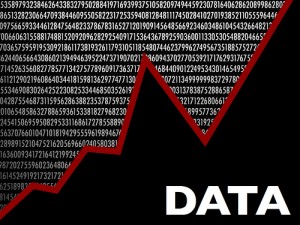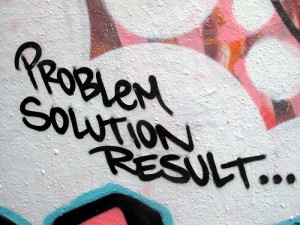By Mary Erdmann, PromoKitchen Contributor
They say, “Salespeople are flaky.” They say, “Salespeople are shift.” They say, “Salespeople have a personality all of their own.” Well, I happen to believe that they are, in fact, right! Whoever they are…
I am an evolving person. I guess. Not by choice, but I have evolved.
I recently went through a huge transition in my work life. My trusty side-kick assistant, who professionally completed me in every way, has decided to leave me. It turns out that the love of her life wanted to move closer to family, and she was going with. Heavy sigh.
She was a main component in my business growth of 35% last year. As much as I understood, my insides hurt. She was gracious enough to give me two months so I could find a replacement and help train the new person. I vowed only to have this person be single and to sign a contract that binded them to me for life. (Wink.)
Early on, I had my doubts on the new person. Try as I might, I couldn’t figure out why I had those doubts. I kept telling myself that it was my nerves in starting over with someone.
One morning while singing in the car (my light bulb turns on often while singing out of tune…doesn’t yours?), it dawned on me: Her personality was extremely different. While I obsessed on figuring out her personality type, I came to the conclusion that she was a perfectionist. Historically, my personality has pissed off these types of people. I am a people person. I make jokes (if you can’t tell). I am drawn to the shiny objects, and I have to work at paying attention to details–which is the exact opposite of her.
To make this relationship work, I realized I had to investigate. I went back to the DISC profile tests I have taken. Throughout the company, we have all taken the tests a few times in our careers. We have even made jokes on our personalities because the results are always perfectly accurate! Here are the four main personality types:
- Drive: People who score high in the intensity of the “D” styles factor are very active in dealing with problems and challenges, while low “D” scores are people who want to do more research before committing to a decision. High “D” people are described as demanding, forceful, egocentric, strong willed, driving, determined, ambitious, aggressive and pioneering. Low D scores describe those who are conservative, low keyed, cooperative, calculating, undemanding, cautious, mild, agreeable, modest and peaceful.
- Influence: People with high “I” scores influence others through talking and activity and tend to be emotional. They are described as convincing, magnetic, political, enthusiastic, persuasive, warm, demonstrative, trusting and optimistic. Those with low “I” scores influence more by data and facts, not with feelings. They are described as reflective, factual, calculating, skeptical, logical, suspicious, matter of fact, pessimistic and critical.
- Steadiness: People with high “S” styles scores want a steady pace and security, and they do not like sudden change. High “S” individuals are calm, relaxed, patient, possessive, predictable, deliberate, stable and consistent. They tend to be unemotional and poker faced. Low “S” intensity scores are those who like change and variety. People with low “S” scores are described as restless, demonstrative, impatient, eager or even impulsive.
- Compliance: People with high “C” styles adhere to rules, regulations and structure. They like to do quality work and do it right the first time. High “C” people are careful, cautious, exacting, neat, systematic, diplomatic, accurate and tactful. Those with low “C” scores challenge the rules and want independence. They are described as self-willed, stubborn, opinionated, unsystematic, arbitrary and unconcerned with details.
In the past, I have always been a high “I,” meaning I am an influencer. But I decided to take the test again. In doing so, I revealed that in the past three years, I have evolved into a high “D”/high “I.” The results nearly made me fall off my chair. Strong willed and pioneering? Me?
When I got back on my chair, I realized that I have changed. As my business grew, I learned to be more efficient. I learned to be more productive. I learned to work at my attention to details. In contrast, after reflecting upon my new assistant’s personality, I came to the conclusion that she was a high “C.”
Now what?
The first step with anything is awareness. Now that I was aware of this hurdle, how do I overcome it? I researched the heck out of being a “C.” I learned that she loves rules and structure. I learned that she loves to hear why we do things and not just how to do things. She enjoys being accurate. She wants to do it right the first time. All admirable qualities of an assistant!
In knowing all of this and with a desire to make this partnership work, I have tried to evolve again. Just like I have to work at my attention to detail, I have learned that I need to work at providing her exactly what she wants.
In the past, my old assistant could read my mind. I could hurry to get things done, knowing that she would fill in the blanks. But this work style isn’t going to work anymore, no matter how long my new assistant has been with me. I need to do it right. I need to do it complete. If she is going to help me continue to grow my business, I am going to need to do things a bit differently. But I know this is something I can do.
This relationship is a give and take for sure. It is a partnership. There are things that she is going to have to learn to work with me, after all, it is her job to help me. It is a work in progress, but I feel confident that our relationship is building strongly, and I can’t wait until I can say that she completes me.
There are no two personalities alike. In working with clients, a good salesperson will shift into the personality that works best with their clients. It isn’t a new way of thinking, which is why I have taken the profile test–and used the results.
In fact, I have fired a few clients because I couldn’t be the salesperson that they needed me to and it is a-okay with me. I am happier to not work with those people, and I am a heck of a lot less nervous (which I’s and D’s hate to be). I enjoy my clients because I have developed a niche clientele that I work best with.
Now I know that internally within the company, understanding personality types works too. If we take the time to understand how we all work and how each of us likes to be addressed, we are all happier. Some people aren’t easy to figure out, and some are like an open book. I believe it is a salesperson’s duty to know internally and externally who we are working with. It is our duty as a servant leader in our lives and our organizations.
But as for this flaky, sketchy, evolving personality, I feel pretty darn confident as to where I am headed.
Mary Erdmann is a sales consultant at S&S Promotional Group. Learn more about her on LinkedIn and follow her on Twitter.
Editor’s Note: Want to know more? Erdmann has taken the DISC profile tests in classes where there is usually a fee associated, and she has taken the test here http://www.123test.com/disc-personality-test/. While the online test results are accurate, the descriptions and charts are not as complex and thorough as if purchased.
 Promokitchen has been privileged to serve up some significant dishes for the PK community including celebrated authors Seth Godin and Dan Pink, and in that spirit of culinary art and haut cuisine, we’re serving what just might be the most delectable conversation yet, an episode featuring the geniuses behind two of the most successful Christmas viral videos of the 2013 season: the WestJet Christmas Miracle video and Christmas Jammies.
Promokitchen has been privileged to serve up some significant dishes for the PK community including celebrated authors Seth Godin and Dan Pink, and in that spirit of culinary art and haut cuisine, we’re serving what just might be the most delectable conversation yet, an episode featuring the geniuses behind two of the most successful Christmas viral videos of the 2013 season: the WestJet Christmas Miracle video and Christmas Jammies.

 Rare is the opportunity for suppliers to see their products in action. You create new products and market them to your distributors. You field requests for samples and you write quotes. You source products or you make them yourself. You carefully decorate them, box them up and ship them to an event. You have spent so much time and effort to produce and deliver tangible branding items, but you almost never see the most important part of the process: When that cared-for product is received.
Rare is the opportunity for suppliers to see their products in action. You create new products and market them to your distributors. You field requests for samples and you write quotes. You source products or you make them yourself. You carefully decorate them, box them up and ship them to an event. You have spent so much time and effort to produce and deliver tangible branding items, but you almost never see the most important part of the process: When that cared-for product is received.


 One innovation I find particularly intriguing is location-based commerce. Imagine pulling your car into a gas station and never having to swipe a credit card. Imagine making a quick stop at the grocery store and walking out with a gallon of milk without ever seeing a cashier. Imagine technology that knows who you are the minute you walk through the door and devices that scan your purchases and send that data back to your bank so you are appropriately charged.
One innovation I find particularly intriguing is location-based commerce. Imagine pulling your car into a gas station and never having to swipe a credit card. Imagine making a quick stop at the grocery store and walking out with a gallon of milk without ever seeing a cashier. Imagine technology that knows who you are the minute you walk through the door and devices that scan your purchases and send that data back to your bank so you are appropriately charged.


 January is a great time of the year. As a business owner, you are setting your goals for the new year and putting your plans in action. You are probably still on a high from the holidays and getting geared up for all the industry shows. I’m a football fan and, for me, January is about the playoffs and building up to the excitement for the
January is a great time of the year. As a business owner, you are setting your goals for the new year and putting your plans in action. You are probably still on a high from the holidays and getting geared up for all the industry shows. I’m a football fan and, for me, January is about the playoffs and building up to the excitement for the